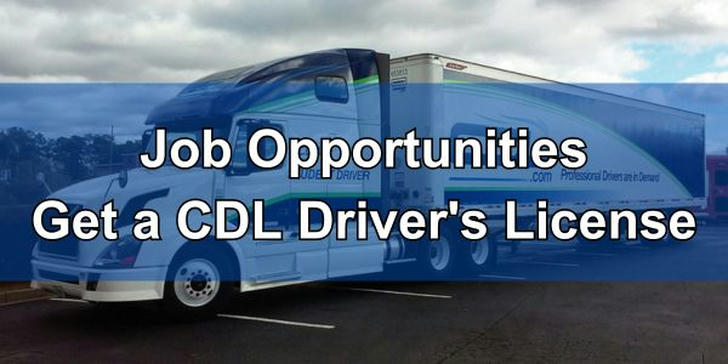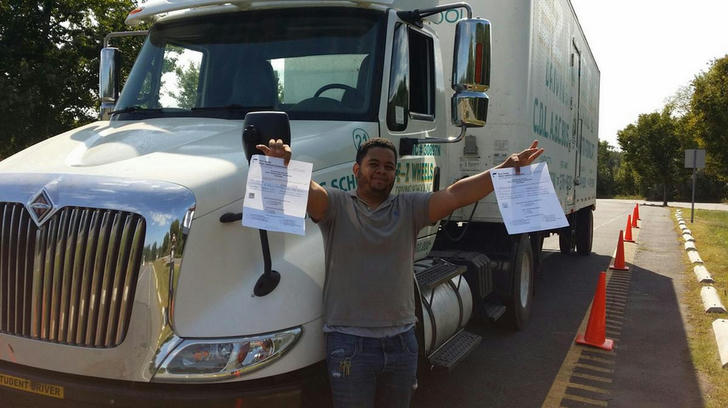Everything You Need to Know About the CDL Course: Your Pathway to a Successful Trucking Career
The Commercial Driver's License (CDL) is a vital requirement for anyone aspiring to drive large commercial vehicles like trucks, buses, and tractor-trailers in the United States. If you're considering a career in trucking, the CDL course is the first step to obtaining the proper credentials. In this article, we'll dive into the importance of CDL training, the process, benefits, and why it's a great career choice for many Americans.

Why Is a CDL Important?
A CDL is not just a regular driver’s license – it’s a certification that ensures you have the necessary skills to operate heavy-duty vehicles safely. In the U.S., truck drivers play a crucial role in the economy by transporting goods across vast distances, and obtaining a CDL is the legal requirement for doing so. According to the American Trucking Associations (ATA), more than 70% of all freight in the U.S. is transported by trucks, demonstrating just how vital truck drivers are in keeping the economy running smoothly. 🚛📦
Without a CDL, you can't legally drive commercial vehicles. But don’t worry, getting your CDL is an achievable goal – and it all starts with enrolling in a CDL training program.
The CDL Training Process: What to Expect
Getting your CDL involves a combination of classroom instruction and hands-on experience behind the wheel. The process typically includes the following steps:
Find an Accredited CDL School
The first step to becoming a certified truck driver is to choose a quality CDL training program. These programs are offered by trucking schools, community colleges, and some vocational schools. They range from a few weeks to a few months, depending on the type of program you select.
In these programs, you'll learn everything from basic driving skills to advanced techniques like backing up a trailer, driving in inclement weather, and navigating tight spaces. Schools also provide important information about federal and state regulations, as well as how to conduct pre-trip inspections and load your cargo safely.
Meet Basic Eligibility Requirements
Before enrolling, ensure you meet the basic eligibility requirements to get a CDL. These requirements vary slightly by state, but generally, you’ll need to:
Be at least 21 years old (18 for intrastate driving)
Have a valid non-commercial driver’s license
Pass a physical exam to ensure you're fit to drive a commercial vehicle
Provide proof of legal U.S. residency (or legal work status)
Classroom Learning
Classroom instruction covers essential topics such as road safety, traffic laws, and the specific rules and regulations truck drivers must follow. You'll also learn about the maintenance of vehicles and safety protocols for loading and unloading freight. This phase is designed to provide you with the knowledge you need to pass your written CDL exam.
Behind-the-Wheel Training
After passing your written test, you’ll begin the hands-on part of training. This involves driving a truck on the road under the supervision of a certified instructor. You'll learn how to maneuver large vehicles, make turns, back up trailers, and practice driving in real-world conditions.
The behind-the-wheel portion is critical because it builds your confidence and prepares you for the skills you’ll need on the job.
Pass the CDL Skills Test
The final step in the CDL process is passing the skills test, which consists of a pre-trip inspection, a basic control skills test, and an on-road driving test. Once you pass all three components, you’ll be issued a CDL.

Types of CDL Licenses
There are different types of CDL licenses depending on the type of vehicle you wish to drive. The main categories are:
Class A CDL: This is the most common CDL and allows you to drive any combination of vehicles with a gross vehicle weight rating (GVWR) of 26,001 pounds or more. With a Class A CDL, you can drive tractor-trailers, flatbeds, and other large vehicles.
Class B CDL: This license is for drivers who operate single vehicles with a GVWR of 26,001 pounds or more. You can also drive a combination of vehicles, but the towed vehicle must weigh less than 10,000 pounds. Examples include city buses, delivery trucks, and dump trucks.
Class C CDL: This is for drivers who operate smaller vehicles, such as passenger vans or vehicles designed to carry hazardous materials. It also allows you to drive a vehicle with a GVWR of less than 26,001 pounds, but it may still be used for transporting more than 16 passengers or hazardous materials.
The Benefits of a CDL Career
Pursuing a CDL is a fantastic decision for several reasons, with some of the biggest benefits being:
Job Security and High Demand
There is a constant demand for qualified truck drivers in the U.S. The U.S. Bureau of Labor Statistics reports that employment of heavy and tractor-trailer truck drivers is expected to grow by 6% from 2021 to 2031, which is about as fast as the average for other occupations. Trucking companies are often desperate to hire skilled drivers, creating abundant job opportunities.
Competitive Salaries
Truck drivers can earn a solid income, especially with experience. According to the U.S. Bureau of Labor Statistics, the median annual wage for heavy and tractor-trailer truck drivers was $48,310 in 2021. However, depending on the type of trucking job and the company you work for, salaries can range from $40,000 to upwards of $80,000 per year.
Overtime pay, bonuses, and long-haul trucking opportunities can also increase your earning potential.
Independence and Travel
For those who enjoy the freedom of the open road, trucking offers a sense of independence. While long-haul drivers spend weeks at a time on the road, shorter routes can offer more home time. Additionally, the trucking lifestyle allows drivers to visit new places and explore different parts of the country.
Career Advancement
Many CDL drivers advance to higher-paying jobs, such as driving specialized vehicles (e.g., refrigerated trucks, flatbeds, or hazardous material carriers), owning their trucks, or becoming logistics managers. There are plenty of opportunities to grow your career once you get your CDL.
Real-Life Success Story: From Student to Professional Driver 🚚
Take the example of John, a truck driver who completed his CDL course at the Roadmaster Drivers School in Florida. He shares, “Before I got my CDL, I was stuck in a 9-5 job that didn’t offer much room for growth. I decided to make a change, so I enrolled in a CDL program. Within a few months, I was driving long-haul trucks, and now I earn a solid income while seeing different parts of the country. It was one of the best decisions I ever made!”
John’s story is a testament to the benefits of obtaining a CDL. Many students, just like him, have taken the leap and found rewarding careers in the trucking industry. 🚛✨
Conclusion: Take the First Step Today!
If you're ready for a career with job security, great pay, and the opportunity for adventure, then a CDL course might be the perfect choice for you. The process is straightforward, and with the right training, you’ll be on the road to a rewarding career in no time.
Remember, the trucking industry is only growing, and there's no better time to start your journey than now! Whether you want to drive locally or across the country, your CDL opens the door to a multitude of career possibilities. 🌟
